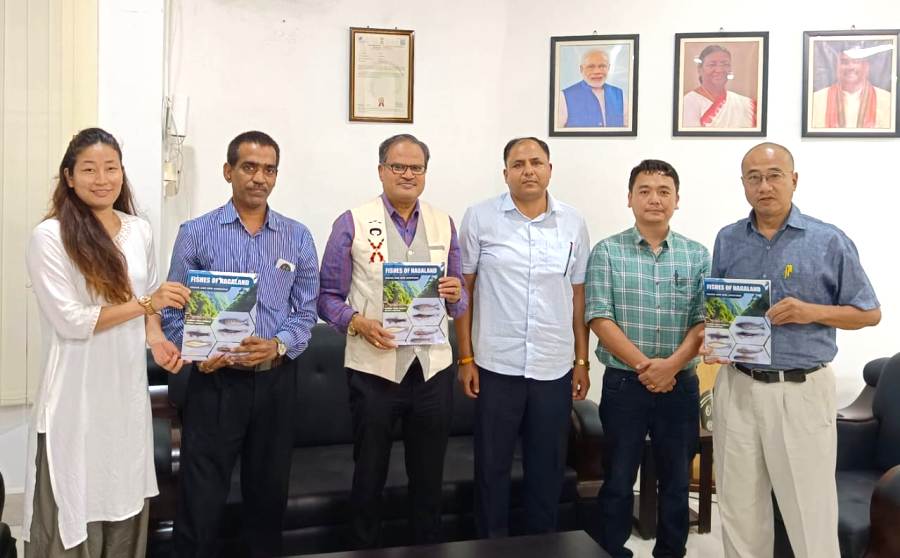Nagaland University Vice-Chancellor Jagadish K Patnaik released the book “Fishes of Nagaland: Status and New Additions” at Lumami in Zunheboto.
Share

DIMAPUR — Vice-Chancellor of Nagaland University, Jagadish K Patnaik, released a new book, “Fishes of Nagaland: Status and New Additions”, at Lumami in Zunheboto on September 19.
According to a press release, the book is a comprehensive work jointly authored by Dr. Pranay Punj Pankaj, associate professor at Nagaland University, and Rejuba Pongen, assistant professor at Fazl Ali College, Mokokchung.
Published by Academic Publishers and Distributors, Lucknow, the book provides an extensive catalogue of fish species found in Nagaland and serves as a resource for researchers, conservationists, policymakers, and others engaged in aquatic biodiversity preservation, it said.
The release event was attended by Bendang Ao, director, RDC; Ranjit Kumar, head of the Department of Zoology; and Dr. Lobeno Mozhui from the Department of Zoology, Nagaland University.
Also read: 4 Nagaland University professors featured in Stanford’s ‘World’s Top 2% Scientists’
It was mentioned that rivers, streams, and wetlands of Nagaland support a wide variety of fish species, many unique to the region. Despite this, the fish fauna of Nagaland has historically been underexplored, with limited scientific documentation.
The book, the release noted, provides a detailed overview of freshwater fish species in Nagaland, based on extensive field research and an in-depth review of published reports and literature. It offers insights into the ecological roles, distribution, and conservation status of these species, with particular focus on newly discovered species, highlighting Nagaland’s status as a hotspot for aquatic biodiversity.
The book examines taxonomic classification, distinguishing characteristics, and geographic distribution of fish species across rivers and wetlands of Nagaland. It addresses conservation challenges such as habitat degradation, pollution, and overfishing while also emphasising the state’s potential for further scientific exploration.
In addition to documenting species’ status, the book underscores the urgent need for conservation efforts. The authors advocate for protecting aquatic ecosystems, restoring degraded habitats, and promoting sustainable fishing practices to ensure the long-term survival of fish species in the state.
The book seeks to inspire efforts to preserve Nagaland’s rich aquatic heritage for future generations, it added.